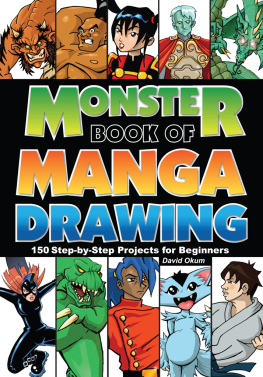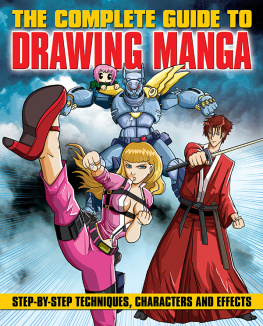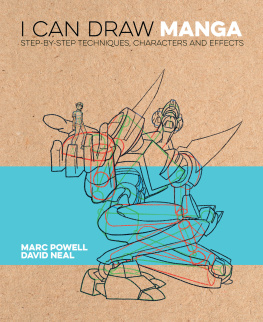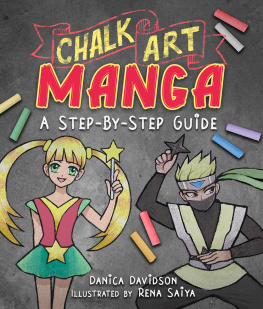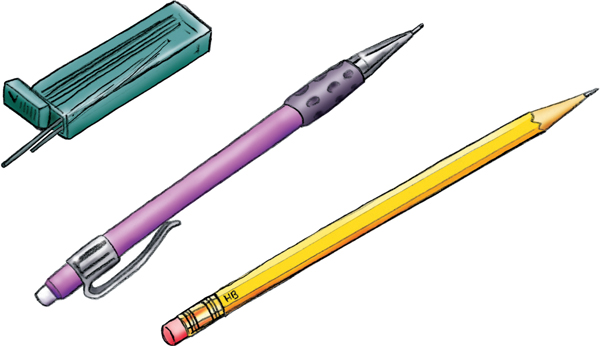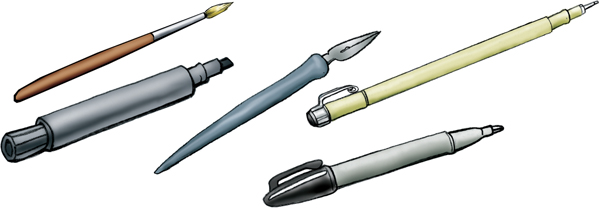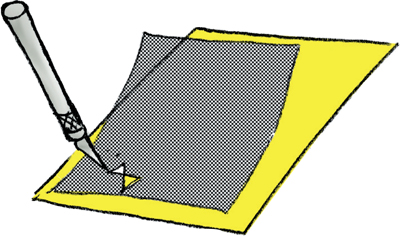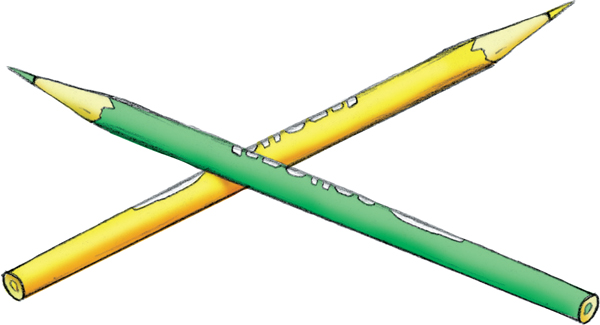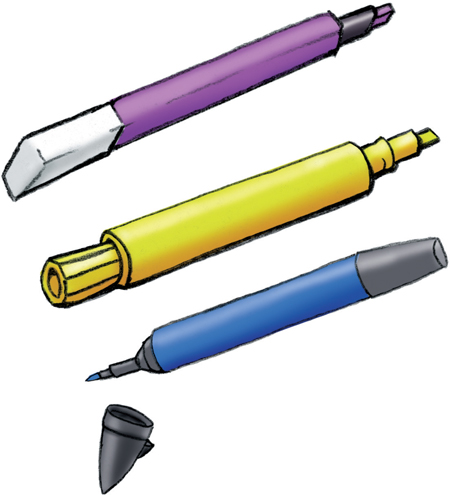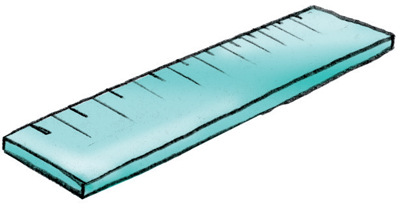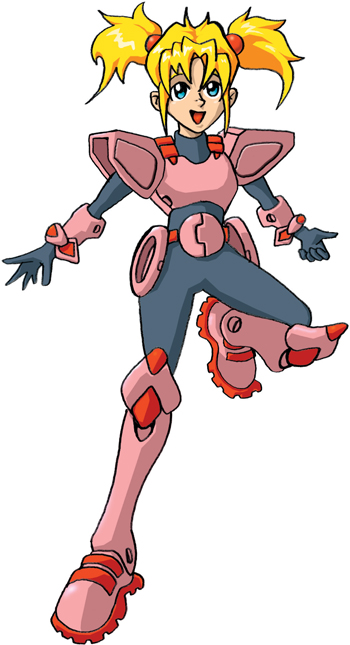Thank you for purchasing this Artist Network eBook.
Sign up for our newsletter and receive special offers, access to free content, and information on the latest new releases and must-have art resources! Plus, receive a coupon code to use on your first purchase from NorthLightShop.com for signing up.
or visit us online to sign up at
http://artistsnetwork.com/ebook-promo
Contents
Before You Begin
You dont need a fully equipped art studio to make manga. Here are some basic tools of the trade you will need.
A clean, flat, well-lit drawing surface. A drawing table, desk, kitchen table or even a coffee table will do.
Paper or board to draw on. Professional comic and manga artists use 2- or 4-ply bristol board sheets cut to 11" x 17" (28cm x 43cm). Most of the images in this book were drawn on 812" x 11" (22cm x 28cm) sheets of bond printer paper. You can find reams of 500 sheets at any office supply store.
Try different types of paper and use what you are comfortable with. You might start out with only a half-used notebook or pieces of scrap paper. No matter what you draw on, keep a sketchbook and draw in it every day.
Pencils. Pencils come in a wide range of hard (H) and soft (B) varieties. Soft pencils (such as 2B or 4B) make nice dark marks, but are hard to erase and tend to smudge easily. Hard pencils (such as 2H or 4H) make fine light lines, but can scratch into the paper or board, leaving unwanted indentations that can make inking and coloring difficult. Some artists prefer HB pencils because they are the most flexible and readily available.
Technical pencils are favored by many artists because of the precise and consistent lines they make. Almost all the line art in this book was done with a technical pencil.
A good pencil sharpener. Keep your pencils sharp. Sharp pencils allow the artist total control over what he or she draws. An electric pencil sharpener speeds up the process, but dont forget to replace the blade when it gets too dull. Hand-held sharpeners work well, too; just watch out for those pencil shavings.
Erasers. Erasers are very important for cleaning up any unwanted lines. White plastic erasers are preferred over pink erasers because they dont grind into the paper or smudge. Clean your plastic erasers occasionally by erasing on a piece of scrap paper until they look white again.
Inking Pens. Keep on hand a variety of thick and thin markers. Be careful with inking. The wrong marker can ruin your hard work. Test your inking pens on scrap paper first. Some markers can really bleed into the paper or board. If possible, try to use India ink or permanent pigment technical pens. The ink shouldnt fade or turn brown like some felt-tip pens.
Traditional nib and holder pens that are dipped into India ink are used by most professional manga inkers. The variety and control of line that is available with these pens in the hands of an expert is amazing. Purists insist on using these pens, claiming that the lines are much more expressive and polished.
The ultimate test of inking control is inking with a fine brush. The warm, calligraphic touch of the brush adds a level of craftsmanship and humanity to the artwork that technical pens cannot duplicate.
Screen tone. Traditional manga uses dry transfer tone patterns for shading. Screen tone can be found at larger art supply stores and comic book conventions, or online. The painstaking process of applying screen tone requires the artist to carefully cut out the chosen area of tone with a sharp blade and then place the transfer neatly on top of the inked artwork. Some artists use computers to simulate screen tone effects. Screen tone is not essential to create your own manga, but it is often used by professionals because the tiny dots are easy to reproduce in printing.
Colored pencils. Soft colored pencils allow for a wide range of shading and blending. They are relatively inexpensive and easy to use and come in a variety of colors. Try blending and shading using little circles and moving the pencil along the natural shapes and forms of the object you are drawing.
Colored markers and paints (optional). Colored markers and paints add a whole new dimension to manga work, but can be difficult to master. Markers are expensive and may give off hazardous fumes. Water-based markers are washable and nontoxic, but smudge easily and dont blend well. Various coloring methods such as markers, paint and computers are discussed later in this section.
A ruler or straightedge. Rulers are most important for drawing perspective lines properly and creating comic panels in manga.
Flat storage for your drawings. Dont let your drawings get folded or crumpled, ruined by a water mark (oops!) or accidentally tossed in the trash. Keep them flat and protected by storing them in a simple, labeled folder or art portfolio.
How Did Manga Begin?
The comic book is a relatively recent invention, but Japanese artists have been producing illustrated books for centuries. The famous Japanese artist Hokusai (17601849) coined the term manga in 1815 when he referred to some of his comic sketches as man (whimsical or careless) ga (drawings).
Japanese manga developed a strong following after World War II. The themes and stories reflect popular culture and national tastes. People unfamiliar with manga are sometimes surprised by how violent and racy some Japanese comics can be. There is a wide audience of women, men, boys and girls that accepts comics and animation as just another medium for storytelling. Manga is produced for every possible group and interest.

